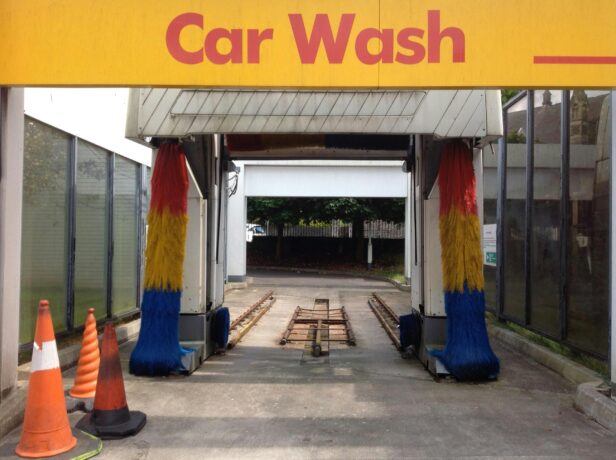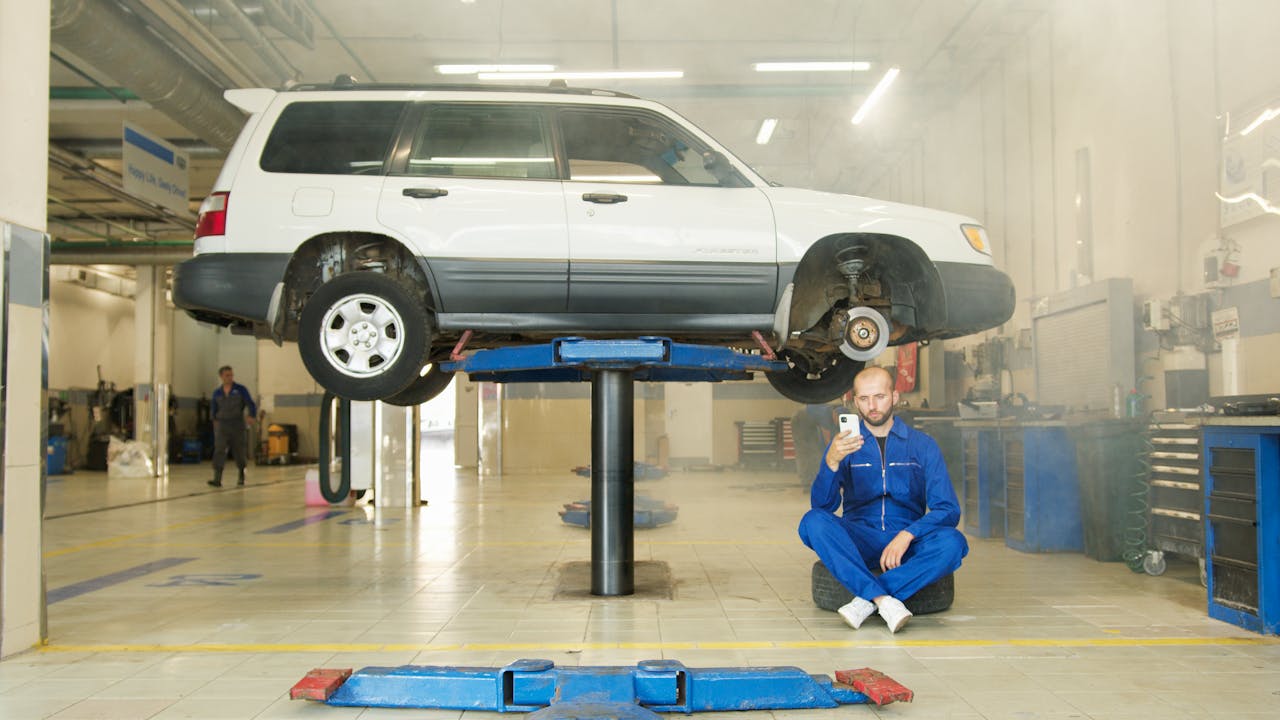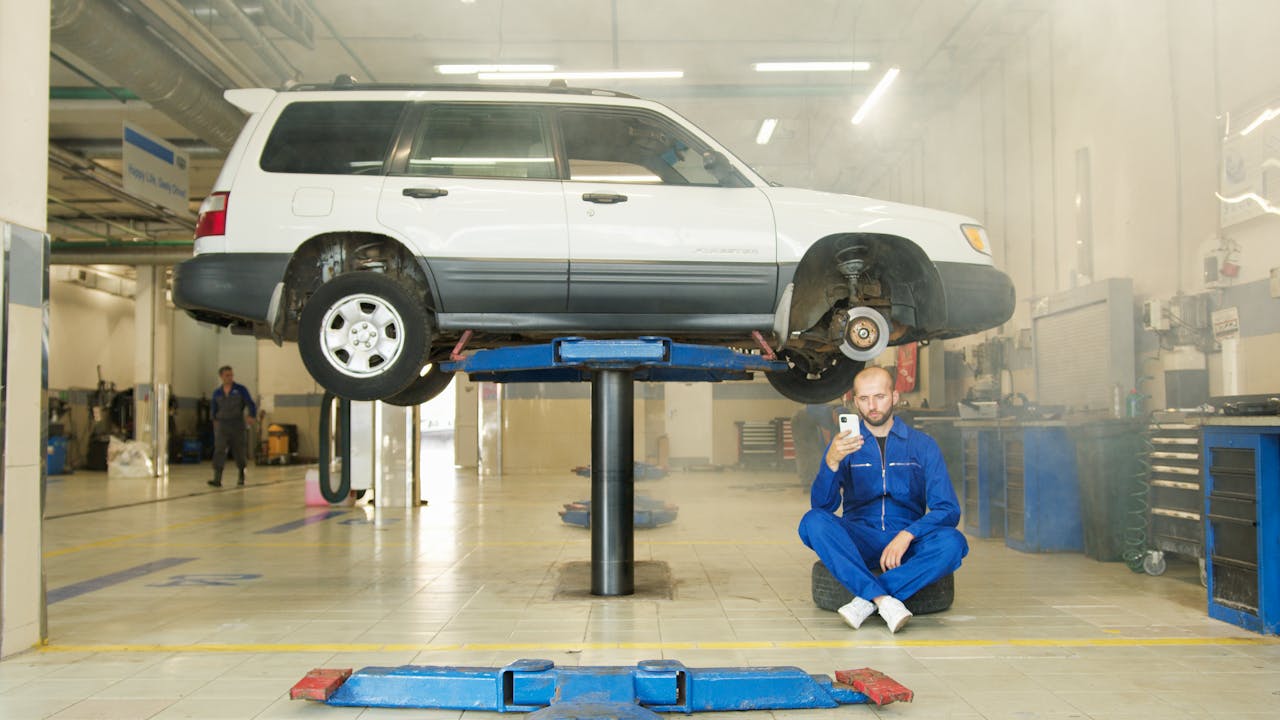Car wash vacuum station electrical planning in Frisco centers on power distribution for central vacuum systems that serve multiple customer stalls. Sites across the area typically feature covered vacuum plazas with bright blue and green hoses extending from overhead canopies. These installations require careful electrical coordination for auto-start sensing at each stall position.
The electrical scope encompasses motor circuits for vacuum power units, control wiring for payment kiosks, and lighting circuits for well-lit customer areas. We coordinate these systems to support the specific wash format and customer flow patterns that define each Frisco location.
Which Car Wash Formats Shape Vacuum Station Needs In Frisco?
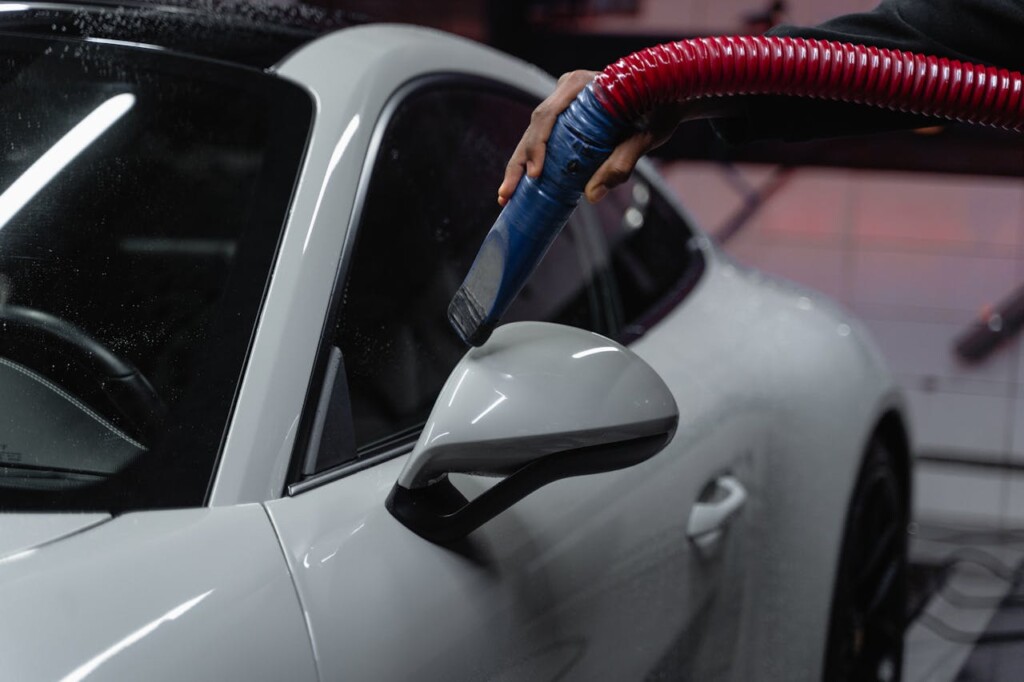
Each car wash format creates distinct electrical demands for vacuum systems. We approach power distribution and control circuits differently based on the operational model and customer flow patterns specific to each format.
Express Exterior Operations
Express exterior facilities represent the most common new construction format in Frisco. These tunnel wash operations transport vehicles through automated cleaning cycles while passengers wait in designated areas.
The electrical infrastructure typically supports free vacuum access as part of the customer experience. We design circuits to handle continuous operation during peak hours, since customers expect immediate vacuum availability after exiting the wash tunnel.
Power distribution focuses on customer self-serve areas with adequate lighting and weather protection. The vacuum stations require reliable startup circuits and consistent power delivery to maintain customer satisfaction.
Flex Service Configurations
Flex service sites present unique electrical challenges with their dual-zone vacuum requirements. These operations commonly feature two vacuuming areas: customer self-serve sections and dedicated staff detailing zones.
We plan separate electrical circuits for each vacuum area to accommodate different usage patterns. The customer self-serve zone requires standard residential-style power distribution, while staff detailing areas need higher-capacity circuits for professional-grade equipment.
This format often demands more complex control systems to manage vacuum access between different service levels and customer types.
Full Service Operations
Full service car washes demand the most robust vacuum electrical systems. Staff handle all cleaning tasks, making speed and reliability critical for maintaining short customer wait times.
We design high-capacity circuits to support powerful vacuum systems that can handle rapid vehicle turnover. The electrical infrastructure must accommodate continuous heavy-duty operation during business hours.
Backup power considerations become more important in full service operations, as equipment downtime directly impacts revenue and customer satisfaction.
In-Bay Automatic And Self Service Models
In-bay automatic facilities allow customers to remain in their vehicles during the wash cycle. The vacuum electrical design supports both pre-wash and post-wash cleaning options with flexible payment systems.
Self service operations typically integrate vacuum controls with bay-mounted kiosks that accept bills and cards for wash functions. We coordinate electrical planning between wash equipment and vacuum stations to ensure seamless customer operation.
Both formats require weather-resistant electrical components and reliable ground fault protection due to the wet environment and customer accessibility.
Vehicle Detailing Centers
Dedicated detailing facilities require the highest-performance vacuum electrical systems. Staff expectations for near-flawless cleaning demand consistent, powerful suction throughout extended use periods.
We specify heavy-duty electrical circuits capable of supporting professional-grade central vacuum systems. The power distribution design accounts for simultaneous operation of multiple high-draw vacuum stations.
Detailing centers often require specialized electrical accommodations for additional equipment like compressed air systems and specialized lighting for quality inspection work.
What Vacuum Station Features Affect Electrical And Controls Decisions?
Central vacuum systems create the foundation for dual-side vacuum access, where customers can position their vehicle and reach hoses from either side. We plan power distribution to support the main vacuum motors that serve multiple vacuum stalls through underground piping networks. This centralized approach requires fewer electrical connections compared to individual vacuum units at each stall.
Auto-start sensing at vacuum stalls adds control complexity but delivers operational benefits. These sensors detect when customers lift hoses or insert payment, automatically starting the vacuum motor and stopping it when the session ends. We integrate these sensors into the electrical controls panel and run low-voltage control wiring to each stall position.
Payment systems create different electrical requirements depending on the business model. Payment-enabled vacuum kiosks need power for card readers, bill acceptors, and display screens. We install dedicated circuits for these payment devices and ensure proper grounding for electronic components. Free vacuum systems tied to wash purchases eliminate payment hardware but may require integration with the main wash control system to activate vacuum access.
Covered and well-lit vacuum areas require lighting circuits designed for the specific canopy structure. We calculate lighting loads based on the vacuum plaza size and local code requirements for illumination levels. LED fixtures reduce electrical loads while providing consistent lighting across the covered area.
Additional amenities impact device locations and electrical planning. Car mat holders with integrated lighting need low-voltage connections. Compressed air stations require their own electrical supply for air compressors, plus control circuits if they operate on timers or payment systems. We coordinate these auxiliary systems with the main vacuum electrical design to avoid conflicts and ensure adequate power capacity.”
How Do Site Layout And Customer Flow Guide Vacuum Station Placement?
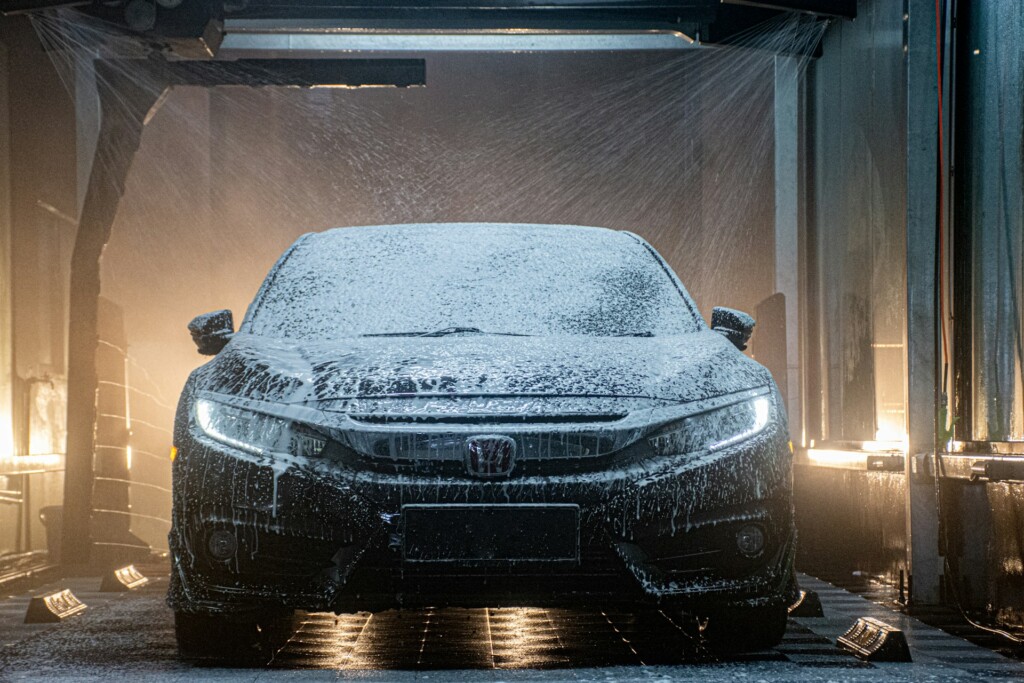
Physical layout drives vacuum effectiveness at car wash sites in Frisco. We observe rows of arch-style vacuum stations positioned under protective canopies, creating defined vacuum plazas that guide customer movement. Clear entrance signage identifies free vacuum areas, helping drivers locate services without confusion.
Dual-sided hose access appears throughout local installations. This configuration allows customers to reach both sides of their vehicles without repositioning, which improves turnover rates during busy periods. When vehicles can be serviced from either approach, staging areas function more efficiently.
Separating Service Zones
Flex service locations often separate vacuum functions by user type. Self-serve vacuum areas accommodate customers who prefer independent operation, while dedicated staff detailing zones provide space for employee-managed services. This separation prevents conflicts between different service speeds and customer expectations.
Self-serve bay configurations integrate payment acceptance directly at stalls. These locations include bill and card readers positioned within easy reach of parked vehicles. Some vacuum posts feature independent payment points, allowing customers to pay without returning to a central kiosk.
Traffic Flow Considerations
Customer flow patterns influence electrical placement decisions. We position power feeds and control panels to support smooth vehicle circulation through vacuum plazas. Staging areas between wash exit and vacuum entrance prevent bottlenecks during peak times.
Detailing zones require different electrical considerations than express vacuum areas. Professional detailing spaces need reliable power for extended vacuum sessions and additional equipment connections. These areas typically feature enhanced lighting circuits for detailed inspection work.
Conclusion And Next Steps
Car wash vacuum station electrical planning in Frisco requires balancing customer expectations with operational efficiency. We see consistent patterns across local sites: central vacuum systems with dual-side access, auto-start sensing technology, and well-lit covered areas that enhance the customer experience. Payment hardware integration varies, but the trend toward free vacuums tied to wash purchases continues to drive site planning decisions.
Your next steps depend on your chosen wash format and business model. Express exterior and flex service operations need robust central vacuum planning to handle peak demand periods. Full service and vehicle detailing centers require higher-performance systems to support thorough cleaning operations. Self-serve facilities benefit from payment-enabled vacuum stations that generate additional revenue. Plan electrical circuits for covered lighting, auto-start controls, and any payment hardware early in the design phase to avoid costly retrofits.
Ready to move forward with your car wash vacuum station electrical planning? Contact EB3 Construction to discuss your specific requirements and site conditions.

